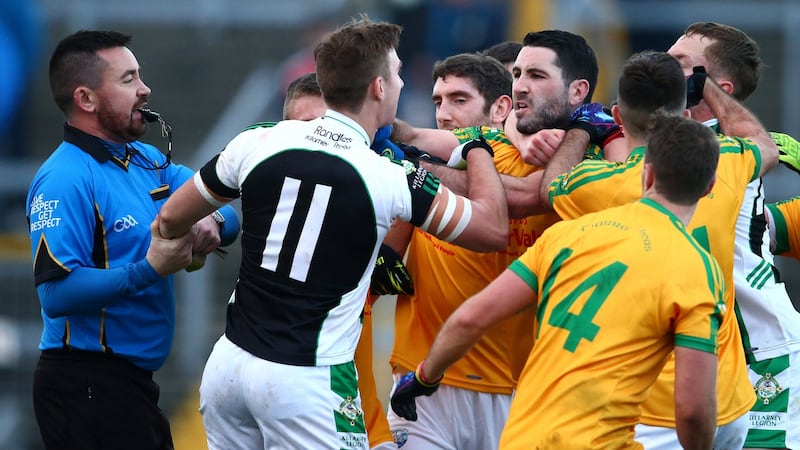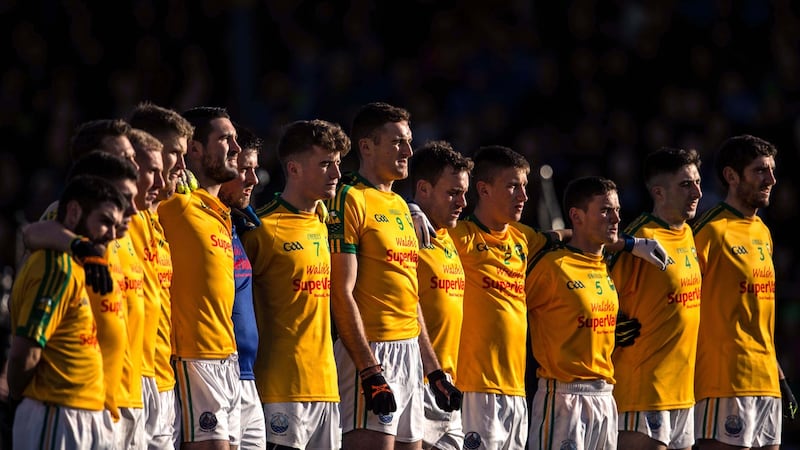The mood was high in The Spotted Dog in London by the time the man made his way over to Christy O’Connell. This was one evening in 1979. The man had left Kerry decades but the Cahirciveen accent had not been diluted.
Like others, he had emerged from the city’s warrens to attend the 50th anniversary celebration for St Mary’s.
“Do you know, Christy, I won a medal with St Mary’s?” And then he produced a South Kerry championship medal from his pocket.
O’Connell started to speak with him but as a player moonlighting as secretary, he was soon called away for presentations. By the time the clapping was over, the man had vanished.
“I made enquiries,” O’Connell recalls now. “He was from the Old Road, near where Sigerson Clifford lived. And you could see what the medal meant to him all those years on. A divisional board south Kerry championship medal is a badge of honour. Take St Mary’s here now: we are bidding for four south Kerry championships in a row. Deep down for the Bryan Sheehans and Denis Dalys of this world, that would be a top priority. It would rank up there for them.”
In Kerry, as the world knows, they do things differently.
Tomorrow, Dr Crokes, the reigning All-Ireland champions will face South Kerry in the county final. South Kerry, North Kerry: it is a hazy concept to outsiders: divisional teams, comprised of the best players in the district, coming together to form representative sides who leave aside intimate rivalries to take on the bigger football beasts in the county.
It’s football democracy at its truest. South Kerry is comprised of a necklace of clubs – St Mary’s, Renard, Sneem, Valentia, Dromid, Waterville, St Michael’s-Foilmore, Skellig and Derrynane. The south Kerry championship is a world unto its own and took off almost as soon as the south Kerry board was set up in 1902.
“You were still in the aftermath of the famine, really,” says O’Connell.
“Emigration was a huge issue – and still is. But the role that the GAA played in rural society meant that there was always pride in the home place. And in that era before machinery, people relied on fishing and farming and people helped out. Coastal rowing was popular but football was always the number one sport.”
Honours’ roll
Since the 1950s, South Kerry has come to hold a prominent place in the Kerry championship honours’ roll, with 10 titles, just two behind Austin Stacks and Laune Rangers. As they are not, strictly speaking, a club, they have never represented the county: Kerry holds a separate ‘club’ championship so teams can duke it out for that honour. Richard McElligott sometimes finds himself blue in the face trying to explain the nuances of the divisional set-up to friends from other counties.
“It’s a double-edged sword,” he says. “You have a county championship, a club championship, a divisional competition and then a league. But I think that is a strength: Kerry club teams are always playing football. And players get seen. Take Declan O’Sullivan. Dromid Pearses is as tiny as they get. If he was in another county, would he have been spotted?”
McElligott is a historian and has written the definitive account of the early years of the evolution of the game within the county, Forging A Kingdom: The GAA in Kerry 1884-1934. (Collins Press, 2013). He feels that the divisional structure has been crucial in sowing the seeds of the Kerry football empire but explains that it evolved naturally rather than as a plotted-out thing.

“I think the whole idea came from Kerry being such a big and remote county. It was a reaction to the economic situation and to emigration. So think back 110 years ago to horses and carts and bad roads. The county board was based in Tralee and it was simply too remote to oversee the games in areas like south Kerry.
“And in the 1890s, the GAA suffered a lot; the association almost collapsed nationally because of political infighting and mass emigration and the economic recession at that time. In 1897, the county board actually folded and there was a three-year period when there was no activity really. So it was their initiative. There was no plan to divide Kerry into four boards. They held the first south Kerry championship in 1902. And so it goes from there.”
The War of Independence and Civil War all but halted GAA progress in the county but, after that, growth took off. In 1920, there were just 25 clubs in Kerry. A decade later, that number had ballooned to 70.
The other Kerry geographical districts formed boards and held their own championships. The improvisation of divisional teams was also a natural evolution. Shannon Rangers, from North Kerry formed the first representative side to play in the county championship in 1940. But South Kerry became the conspicuous success, quickly winning three titles in the 1950s. They won three-in-a-row from 2004-06 and the last title was netted in 2015.
No quarter
It’s a strange concept from the outside because it requires players from those fiercely rooted villages and townlands to conspire to form a generalised team. Every so often, clubs break free of the group. St Michael’s/Foilmore operated outside the division for a few seasons while in the late 1960s, Mick O’Dwyer and Mick O’Connell spearheaded a strong Waterville side that reached three county finals in a row. In one of those seasons, they were drawn against the South Kerry side.
“They won after a replay,” remembers O’Connell. “And it was a rivalry, all right. There was no quarter asked for or given. But in general, when South Kerry take the field, there will be full unity. Like, it is established for so long that there is a wide acceptance.”
Declan O’Sullivan, Bryan Sheehan and Maurice Fitzgerald were all on the South Kerry side that defeated Dr Crokes to win that three-in-a-row in 2006.
It was a final crowded with dramatic moments: Fitzgerald was actually stretchered off unconscious after a collision with a team-mate, Colm Cooper had a late chance with a free to edge it for Crokes and then Sheehan stepped up to nail one of those 60-yard monster frees of his to claim the day.

Players from eight different clubs were on the field, including Valentia, Renard (Killian Young) and Sneem. A once-in-a-generation talent like Fitzgerald could aspire to All-Ireland honours because he lived in Kerry but a county medal would have been beyond him if there was no divisional side.
That’s the beauty of the divisional structure. It means that, regardless of the size of a player’s local club, he has a chance to prosper at the elite level of the game. Sneem, for instance, produced one of Kerry’s most favourite sons, John Egan. Here he is telling Weeshie Fogarty how he came to find out that he had cut it as a Kerry senior.
"We were playing Legion and I was marking Jimmy Deenihan. And I was down in Killarney and I went for a bite to eat. And I bought the Kerryman and I saw: 'Egan gets his call-up'. So the first game I played was over in Kildare with Pat Griffin and Mick O'Dwyer and all them guys. It was in October 1972. Mikey Sheehy came on as a substitute with hair down to his shoulders and black togs."
Egan went on to have one of the garlanded Kerry careers. It didn’t matter that his club wasn’t one of the local giants: the divisional system was so thoroughly embedded in the 1970s that it meant he was always going to get noticed and have his chance. The same is true tomorrow when the South Kerry selection come up against the town.
“I think one of the secrets of Kerry football is that in a championship match you will see tight marking and the rest,” says O’Connell.
“But if someone was to take a promising young player out of it with the boot or a high tackle, you will be shunned by your team-mates. People won’t accept it. And it means you have young players coming in all the time.”
All the time. The wheels keep turning.





















